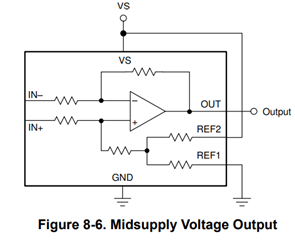Other Parts Discussed in Thread: INA240
Hello Team, following question from customer:
Currently we are working on the worst case calculation.
For the tolerance calculation we have used the “current sense error analysis” from the TI homepage.
From our understanding the tool can just support a ground referenced output circuitry (starting with 0 A) for the error calculation.
Since we are using the midsupply voltage output circuit, is there another version of the tool or setting available?
Our measurement range is between -40 A to 40 A (2.5V output = 0 A).
Could you also please help us to understand how the error characteristic and mechanisms are acting (e.g. biggest error at -40 A / at 0 A / …).

Many Thanks
Josef

